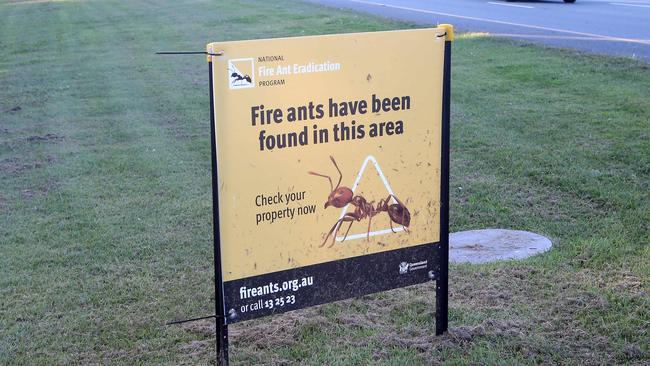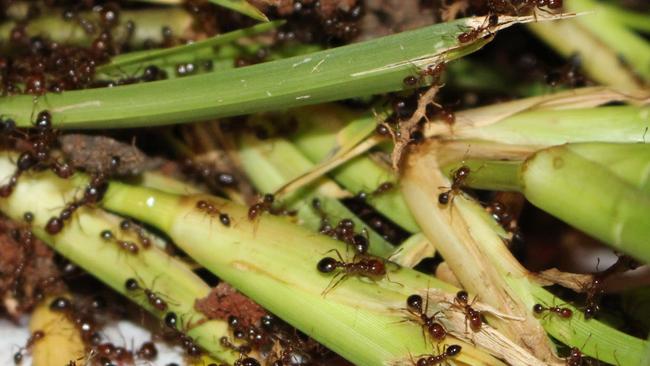Fire Ants: Gold Coast needs $600m to ‘put the blowtorch on’ super pest threat
Councillors are demanding the state government boost fire ant eradication funding from $60m to almost $600m a year to prevent a catastrophic tourism impact on the Gold Coast.
Central
Don't miss out on the headlines from Central. Followed categories will be added to My News.
City leaders are demanding the state government boost fire ant eradication funding from $60m to almost $600m a year to prevent a catastrophic tourism impact on the Gold Coast.
Ahead of a meeting of the nation’s Agriculture ministers on Thursday, Gold Coast City Council’s lifestyle community unanimously called for a report outlining the escalating social, economic and biosecurity risks of imported red fire ants.
The recommendation in the report, which will be presented in future talks with the state, is council’s preferred approach will be “eradication of the pest”. However, that requires significant state and federal funding.

Lifestyle committee chair Councillor Hermann Vorster said the Queensland Auditor General this month had released a damning critique of the state’s response which would hopefully trigger action.
“We can’t take them on face value. We’ve made a number of good faith offers to the state to be working more closely in this space and they’ve been ignored while more community assets are put at risk,” he said.
Lifestyle and Community director Alton Twine said the Queensland Auditor Office (QAO) identified a number of options to manage imported fire ants including the preferred solution of eradication but it required a funding boost.
“The QAO report identifies the need for an additional $593 million over the next four years. So it is a significant uplift to the current resourcing which we understand to be in the order of $60 million a year,” Mr Twine said.

“But of course the report also identifies if this is untreated what the risk to the economy is, and it’s in the billions of dollars.”
It comes after Acting Mayor Donna Gates met with state Agriculture Minister Mark Furner on Monday night to discuss the city’s mounting concerns.
“Fire ants are a major concern for our city, so I welcome the Minister’s time to discuss this significant biosecurity issue,” she said.
“I requested from the government better community communication so that residents can recognise fire ants and their nests.
“I eagerly await to hear how the biosecurity talks between the states and federal government goes this Thursday, where we hope support is given to increase the level of funding in Queensland and the Gold Coast.

“We need these pests eradicated.”
An urgent push for the state and federal governments to throw more resources at tackling the ant invasion is gathering steam, with the creatures having reached the Southport Broadwater Parklands, The Spit and the southern Gold Coast.
Prime Minister Anthony Albanese in June said dealing with the spread of the ants presented a challenge for the city’s economy after a Commonwealth review of response programs found eradication could not be achieved with the current budget.
Fire ants, which are native to South America and first discovered in Brisbane in 2001, are considered one of the world’s worst invasive species because of their rapid spread.
They are highly aggressive and will swarm anything which disturbs their nests. Their stings can be fatal in rare circumstances.

Cr Vorster said too little had been done by successive state governments since the ants were found 22 years ago.
“They took their foot off the gas and then it just escaped. We are now saddled with this extraordinary cost to taxpayers because of a botched initial response,” he said.
“My real concern is that we don’t hold them to account and get eradication handled as quickly as possible we will have these recurrent costs indefinitely with no ability to ever go back to normal.
“What that means is more sporting fields will be closed down, beaches put at risk, nature walks shut down, and potentially constraints around development because wherever there are red ants in the vicinity there are extra costs for developers incur to manage that risk, and sites have to shut down.
“Lets put the blowtorch on them.”




